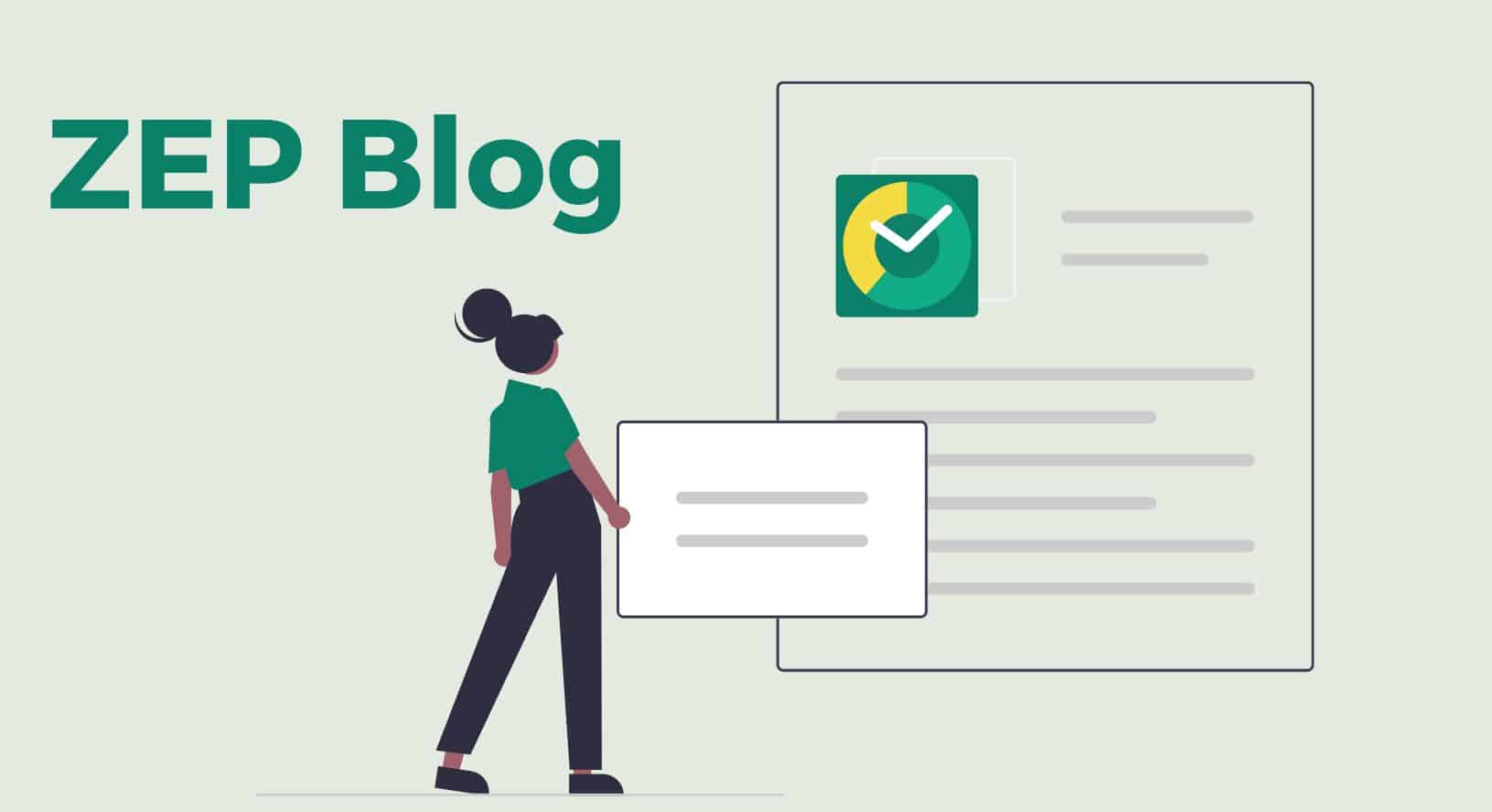Zeiterfassung im Homeoffice ist nach dem „Stechuhr-Urteil“ des Bundesarbeitsgerichts relevant, und Softwarelösungen wie ZEP bieten eine einfache Lösung zur rechtlichen und projektorientierten Zeiterfassung.

Since the „Stechuhr-Urteil“ des Bundesarbeitsgerichts ist das Thema Zeiterfassung (wieder) in aller Munde. Immer noch gibt es viele Fragen, die es zu beantworten gilt, z. B.: Wie sieht es zukünftig mit der Zeiterfassung im Homeoffice aus? Wir haben die wichtigsten Daten und Fakten zusammengetragen.
„Homeoffice – Was bedeutet das eigentlich genau?“ Was auf den ersten Blick wie eine banale Frage klingt, ist auf den zweiten (juristischen) Blick alles andere als banal. Zum einen gibt es derzeit (noch) keine verbindliche gesetzliche Definition für den Arbeitsplatz zu Hause, auf der anderen Seite wird der Begriff häufig analog verwendet zu Begriffen wie „mobiles Arbeiten“, „Telearbeit“ oder „remote work“. Das Homeoffice definiert sich in erster Linie über den Ort, an dem ein Mitarbeitender seine Arbeit verrichtet. Und dabei gehen Experten von einem fest eingerichteten Arbeitsplatz außerhalb des Betriebs aus, an welchem der Arbeitnehmende seine Arbeitsleistung regelmäßig erbringt. Und aus diesem Grund ist der Arbeitgebende eigentlich auch verpflichtet, zu überprüfen, ob der Arbeitsplatz des Mitarbeitenden zu Hause den gleichen gesetzlichen Anforderungen genügt wie der betriebliche Arbeitsplatz. Der aus vielen Corona-Postings bekannte Schreibtisch im Kinderzimmer oder Küchentisch im Ein-Zimmer-Appartement tut dies sicher nicht.
Ein weiterer „Zankapfel“ aus Corona-Zeiten. Bereits im Oktober 2020 legte der damalige – und heutige – Bundesarbeitsminister einen Gesetzentwurf für mobiles Arbeiten vor, der vorsah, dass Vollzeitbeschäftigte einen Anspruch auf 24 Tage Homeoffice im Jahr haben. In der Vorgängerregierung konnte er sich damit nicht durchsetzen und deshalb versucht er es derzeit erneut.
Das Gesetz für mobile Arbeit liegt derzeit als Referentenentwurf vor. Es soll verlässliche gesetzliche Rahmenbedingungen für Homeoffice schaffen. Der Entwurf sieht vor, dass „Arbeitgeber mit Beschäftigten, die von zuhause aus arbeiten wollen, die Möglichkeit von Homeoffice erörtern müssen. Zusammen sollen sie das Ziel haben, eine Vereinbarung zu treffen“. Von einem „Recht“ auf Homeoffice ist nicht mehr die Rede. Damit gilt derzeit noch die bisherige Regelung, bei der der Arbeitgebende allein entscheidet, ob Arbeitnehmende von zuhause aus arbeiten dürfen. Wann die gesetzliche Regelung für mobiles Arbeiten kommen soll, ist bisher nicht bekannt.
Was die aus den vergangenen beiden Jahren bekannte Homeoffice-Pflicht betrifft, so hat das Bundeskabinett Ende August 2022 eine neue Corona-Arbeitsschutzverordnung mit Vorgaben zum Infektionsschutz am Arbeitsplatz beschlossen: Nach massiver Kritik wird die Homeoffice-Angebotspflicht nun doch nicht wieder eingeführt.
Auch für die Arbeit zuhause gilt natürlich generell die auch im Betrieb übliche und in der entsprechenden Betriebs- oder Dienstvereinbarung festgelegte Arbeitszeit. Viele Beschäftigte, deren Arbeit überhaupt für das Homeoffice geeignet ist, arbeiten heute in Gleitzeit. In diesen Fällen gelten dann die festgelegten Rahmenarbeitszeiten.
Selbstverständlich gelten auch im Homeoffice alle Vorschriften des Arbeitszeitgesetzes uneingeschränkt. Das heißt: Die Höchstarbeitszeit von zehn Stunden täglich darf in keinem Fall überschritten werden. Die Ruhezeit von elf Stunden nach Beendigung der Arbeit bis zum Beginn des nächsten Arbeitstags ist zwingend einzuhalten. Nach sechs Stunden Arbeit muss eine Pause von einer halben Stunde und – wenn die Arbeitszeit neun Stunden und mehr beträgt – sogar von 45 Minuten eingelegt werden. Sonntagsarbeit ist auch im Homeoffice verboten. Soweit die Theorie. Dass diese Vorgaben in Zeiten, in denen für viele Mitarbeitende ein „Always online“ gilt, in der Praxis kaum noch eingehalten werden, steht auf einem anderen Blatt. Für die Zeiterfassung sind sie allerdings weiter relevant.
Kommt nun also die Stechuhr auch nach Hause? Prinzipiell schon. Im eingangs erwähnten BAG-Urteil wird nämlich überhaupt nicht auf neue Arbeitsformen wie das Homeoffice eingegangen. Das Gericht erklärt lapidar: „Der Arbeitgeber ist nach § 3 Abs. 2 Nr. 1 ArbSchG verpflichtet, ein System einzuführen, mit dem die von den Arbeitnehmern geleistete Arbeitszeit erfasst werden kann.“ Von Ausnahmen, z. B. im Homeoffice, ist keine Rede, also muss im Umkehrschluss davon ausgegangen werden, dass das Urteil auch für die Arbeit zuhause gilt.
Wer jetzt bereits nach einem Platz für die Stechuhr neben dem Kühlschrank oder im Kinderzimmer sucht, kann damit wieder aufhören. Denn mittlerweile gibt es zahlreiche Möglichkeiten, seine Arbeitszeit per Software oder per mobiler App zu erfassen – und damit alle rechtlichen Anforderungen zu erfüllen.
For example, the ZEP Clock eine benutzerfreundliche Lösung zur reinen Arbeitszeiterfassung mit einfachen Auswertungsmöglichkeiten im Browser, als mobile App für iOS und Android oder – vor Ort im Betrieb – mit dem ZEP Terminal.
Unternehmen in der Unternehmensberatung oder der Softwareentwicklung, Ingenieurbüros oder Werbeagenturen stehen neben der reinen Zeiterfassung vor der zusätzlichen Herausforderung, dass die Mitarbeitenden auch im Homeoffice ihre Arbeitszeiten nicht nur lückenlos erfassen, sondern dass sie zusätzlich dokumentieren, für welches Projekt bzw. welchen Kunden sie gearbeitet haben. Nur so ist ein präzises Projekt-Controlling möglich und nur so gelingt die zeitnahe Abrechnung der geleisteten Projektarbeitszeiten – unabhängig davon, WO sie geleistet wurden.
ZEP wurde genau für diese Unternehmen entwickelt. Die Lösung ermöglicht eine zeit- und ortsunabhängige Zeiterfassung und -zuordnung zu den entsprechenden Projekten – per Web-Interface oder über die mobile App.
Weitere Informationen über die vielfältigen Einsatzmöglichkeiten und Module von ZEP gibt’s auf der ZEP website.


Read article ↗

How can you strengthen your employer brand and attract the best talent? Discover 11 effective employer branding measures that will help you stand out from the competition and optimise your recruitment strategy.
Read article ↗
We answer your questions quickly & competently. Contact us by phone or email.
+49 7156 43623-0 or contact form